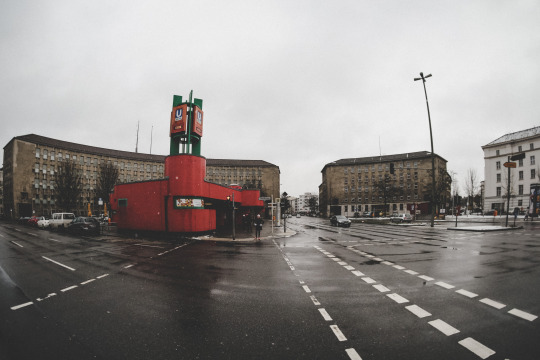#fehrbelliner platz
Explore tagged Tumblr posts
Photo

Falsche Richtung
1 note
·
View note
Photo

half and half
berlin wilmersdorf, 2017
#architecture#berlin#colour blocking#fehrbelliner platz#graphical#red#urban#wilmersdorf#yellow#Photographers on tumblr#Original photographers
45 notes
·
View notes
Photo

Fehrbelliner Platz
#espritmetropolphotography#fehrbelliner platz#hauptstadt#haltestelle#U-Bahn#U-Bahnhof#Fisheye#Berlin 2017
30 notes
·
View notes
Photo

#Berlin#subway station#Fehrbelliner Platz#underground#train#yellow#BVG#clean#photographers on tumblr#20–50mm#nx1000
28 notes
·
View notes
Photo

Kids are enthousiastic about the garden project in the refugee shelter at Fehrbelliner Platz in Berlin, which is hosting about 1100 people some of them already for one year.
0 notes
Photo

U-Fehrbelliner Platz ...I have to admitt, West-Berlin owns some real nice design jewels:) I really like the look of this underground station!
#Fehrbelliner Platz#charlottenburg-wilmersdorf#Wilmersdorf#Berlin Underground#Berlin Illustration#Bahnhof#Architektur
2 notes
·
View notes
Photo

Fehrbelliner Platz
0 notes
Photo

quartet on red
berlin wilmersdorf, 2017
#berlin#fehrbelliner platz#graphical#red#ubahn#urban#wilmersdorf#Photographers on tumblr#Original photographers
53 notes
·
View notes
Photo

Fehrbelliner Platz
12 notes
·
View notes
Text
Gärten zum Ankommen
Das ehemalige Rathaus Wilmersdorf wird seit August 2015 von Geflüchteten bewohnt, mittlerweile sind es 1100 Menschen. Seit letzter Woche läuft in der neben Tempelhof bei weitem größten Notunterkunft Berlins das Projekt „Zusammen wachsen“, das aus dem tristen Innenhof einen grüne Oase machen soll.
Es wirbeln Kinder mit Gartenhandschuhen, Schaufeln und Gießkannen umher. Einige schippen Erde in Eimer, im Eifer fliegt etwas über die Köpfe, trifft einen anderen. Ein schlanker, elegant gekleideter Mann in weißem Hemd nimmt beide beiseite, schlichtet und tröstet. Gleich kommt Philipp Bertram, Leiter der Stabsstelle Integration und Ehrenamt jedoch wieder zu den drei Hochbeeten, die am vergangenen Freitag in der Notunterkunft Fehrbelliner Platz im Rahmen des Projekts „Zusammen wachsen“ gebaut und bepflanzt wurden. Staatssekretär für Verkehr und Umwelt Christian Gaebler, der stellvertretende Geschäftsführer der Grünen Liga Ulrich Nowikow und Projektleiterin Ines Fischer legten im komplett gepflasterten Innenhof Hand an. „Eigentlich ist graues Wetter Gartenwetter“, Nowikow blinzelt in die flirrende Sonne, „Ich bin aber froh und gespannt, wie sich unser erstes Projekt, dass sich besonders an Geflüchtete richtet, entwickelt.“ Bereits im letzten Jahr hatte die Grüne Liga Kontakt mit Schutzsuchenden, beim Wettbewerb „Urbane Paradiese“ wurden die „Gärten der Hoffnung/Bustan-ul-amal“ in Köpenick und der Dachgarten „Über den Tellerrand wachsen“ in Neukölln mit Preisen ausgezeichnet. Obwohl sich ursprünglich einige Frauen gemeldet hatten, halten sie sich beim offiziellen Termin im Hintergrund. Die Kinder haben kaum Berührungsängste, sie rennen um den Besuch herum, lachen und gießen die gespendeten Pflanzen. Unterdessen bohren Ehrenamtliche Paletten für das zweite Hochbeet zusammen, dann wird die schwarze Plane innen fest getackert. Und dabei allein wird es im gut 1000 Quadratmeter großen Hof nicht bleiben. Bald, so die Planung, soll auch ein Fußballfeld und ein Spielplatz entstehen. Für viele hier ist das ehemalige Rathaus ein neues Zuhause geworden, sie warten auf die Bearbeitung ihrer Papiere. Konflikte gab es zuletzt um den Weggang von Thomas de Vachroi, mit ihm vieler Ehrenamtlicher und die finanziellen Unklarheiten vom Betreiber Arbeiter-Samariter-Bund, die derzeit vom LaGeSo geprüft werden. Zudem leiden die Mitarbeitenden permanent unter einer gewissen Planungsunsicherheit, denn die Notunterkunft Fehrbelliner Platz noch keine Verlängerung über den 31. Juli hinaus erhalten. Annegret Hansen von der Wilmersdorfer BVV ist darüber verärgert: „Wir verlieren dadurch auch gute Mitarbeiter, die sehen sich nämlich im Zweifel anderweitig um.“ Christian Gaebler von der Senatsverwaltung für Stadtentwicklung und Umwelt versprach dieses Thema am Montag im Senat anzusprechen. Integrations- und Ehrenamtsleiter Philipp Bertram kann darüber nur stoisch lächeln: „Wir kennen das schon und gehen einfach davon aus, dass es weitergeht. Sonst könnten wir hier gar nicht arbeiten.“ Man spürt eine Anspannung. Aber zugleich auch, wie gut dem Team das neue, unbelastete Projekt tut. Gärten sollten jedoch nicht nur in künftigen Flüchtlingsunterkünften eine Rolle spielen, sondern darüber hinaus generell im städtischen Raum, in Parkanlagen, sowie im vernachlässigten sozialen Wohnungsbau. Das Gartenprojekt „Zusammen wachsen“ richtet sich daher nicht nur an Schutzsuchende, sondern auch an Schulen, Nachbarn, Vereine. Unabhängig von Alter, Herkunft, Gesundheit oder sozialen Bedingungen kann jeder Mensch teilnehmen. „Gemeinschaftliches Gärtnern schafft Brücken zwischen den Menschen“ steht in der Begleitbroschüre, in den heutigen Zeiten mehr als nötig. Das soll dazu bewegen, miteinander wieder mehr ins Gespräch zu kommen, sich kennenzulernen und Vorurteile abzubauen. Mit ein wenig Offenheit und Neugier entsteht so Kontakt und Austausch fernab von geschlossenen digitalen Dörfern und omnipräsenter Konsumlogik.
nd, 25.6.2016
#nuk#fehrbelliner platz#berlin#garten#refugeeswelcome#grüneliga#grüne liga#refugees#geflüchtete#flüchtlinge
0 notes
Photo

let there be light
ok! fehrbelliner platz, berlin, 2017
#abstract#berlin#photographers on tumblr#original photographers#fehrbelliner platz#graphical#lamp#red#urban#wilmersdorf#yellow
22 notes
·
View notes


